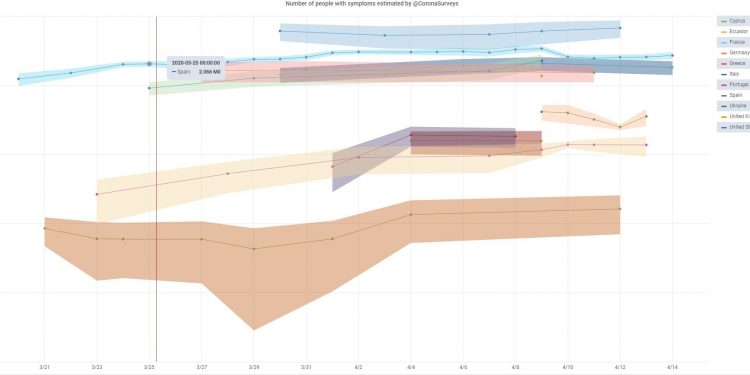An international team of researchers, including INESC TEC’s collaborator at the High Assurance Software Laboratory (HASLab), Carlos Baquero, developed an open social media survey in order to estimate the number of confirmed cases with COVID-19 symptoms and monitor their evolution in eleven countries.

Anyone can access the survey (available here) and the participants only have to answer two questions: how many people do you know in your geographic area and how many of them have symptoms associated with COVID-19 (or have been diagnosed with the disease)? The answers are anonymous and, unlike other surveys, the participants don’t have to disclose any information about their situation.
The data are then treated and processed to eliminate outliers, through statistical techniques. Finally, they are compared with other estimates, which infer the number of cases according to the evolution of mortality rates reported by official channels, and their relationship with the mortality rate among the cases reported in Wuhan (about 1.4%), in order to validate their accuracy. For Carlos Baquero, a member of the group of researchers in the “Measuring the Iceberg” research, the key advantages of this method are simplicity, proximity to real cases and anonymity.
“Unlike the simple observation of the number of confirmed cases reported through official data – which depends on the number of tests performed each day – our analysis is based on a survey administered to the population. Although our estimates are not entirely accurate, we expect them to be in the same order of magnitude as the actual value, thus helping researchers come closer to the potential cases that have not been signalled for testing. We were able to verify that the estimates are very similar to other indirect methods used”, said the researcher at HASLab and professor at the University of Minho.
What data show

The results, updated on a daily basis, are available here. In addition to provide the total number of symptomatic infected people per day, the study helps researchers observe the evolution of the disease. In Spain, the country where the study was launched and steered, the data concerning April 6 showed a total of three million cases, a number significantly higher that the Government’s official estimate of 130,000, but also lower than a study by the Imperial College – stating that 15% of the population was infected, with the majority being cases with symptoms.
In Portugal, data from April 6 suggest 84,000 cases (margin of error around 30,000). “We do not wish to cause unnecessary alarmism. Our goal is to improve these types of tools, validate their use and apply them in future situations. This kind of approach could actually complement the rapid monitoring of pandemics’ evolution, particularly in regions with insufficient laboratory testing capacity, but where digital media already offer good coverage”, he concluded.
This research began in early March, and it has been adopted by other countries besides Spain. Portugal, Argentina, Chile, Cyprus, France, Germany, Greece, Italy, Japan, the United Kingdom and the United States are now carrying out the study, with more countries expected to follow. Researcher Antonio Fernandez Anta of IMDEA Networks, a Spanish institute that does research on data networks, is in charge of leading the team.
Raquel Menezes, lecturer and UMinho, also participates in this study, in addition to Carlos Baquero.
More information about the study at https://coronasurveys.com/
The researcher mentioned in this news piece is associated with UMinho.




 News, current topics, curiosities and so much more about INESC TEC and its community!
News, current topics, curiosities and so much more about INESC TEC and its community!